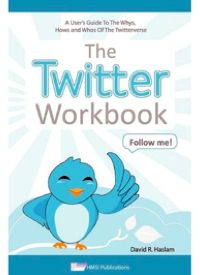
Do you ever find yourself saying, “It used to be so simple?” Sharing your views was a simple as handing out flyers, attending a meeting, or making a few phone calls. Then you discovered e-mail and the Internet, and before long, you were deluging your friends and acquaintances with forwarded posts and links to websites.
Then, everything got a little confusing. (Well, maybe not too confusing if you are reading book reviews online!) A plethora of “social networking” tools was created, and suddenly you were hearing about MySpace, Facebook, LinkedIn, and MeetUp; and you were “googling” for news and watching videos on YouTube. Media that didn’t exist 10 years ago were suddenly becoming central elements of presidential campaigns. Perhaps it all got a bit overwhelming.
And then came Twitter. I remember the first time I heard an anchor on a cable network pushing viewers to follow his “tweets” (his messages posted through Twitter), I thought, “Oh, no … here we go again.” While companies were already setting restrictions on their employees to keep them from whiling away the day on social networking sites, here, I thought, was just one more site to do more of the same thing. I was wrong.
Twitter has become not a replacement for other sites, but another “tool” in the social networking “toolbox.” The concept is deceptively simple: each message — or “tweet” — is limited to 140 characters, posted to a micro-blog that is accessible to every Twitter user who has chosen to follow your tweets. The result of all the “tweeting” has been the latest communication explosion. The fellow who is “playing with his phone” during a speech or a conference may very well be instantly reporting on the event to hundreds of followers via Twitter.
David R. Haslam, the author of The Twitter Workbook, has a contagious enthusiasm for his subject. Haslam’s workbook is divided into four parts: “Beginning with Twitter,” “Why Use Twitter?,” and “How to Twitter?,” and “Who Uses Twitter?” Arguably, the organization of these major sections is counterintuitive: presumably one would begin with the “why” and “who” before launching into the mechanics of using Twitter. The first part is intended as a guide for those who wish to simply “dive in” to twitting, but it would seem reasonable to assume that those who are already convinced of the merits of the site will simply create their accounts and feel their way through the process. The user who desires a lot of guidance through the process may simply skip to chapter seven — “Twitter basics” — which contains a very detailed instructions concerning how to set up an account.
The most helpful elements of Haslam’s book can be found in the nine “case studies” interspersed throughout the book and his brief profiles of 23 Twitter users. The case studies are actually interviews with Twitter users (or “Tweeps") in which they explain how they are using the site to promote their businesses or causes, and are usually having a great deal of fun in the process.
In today’s political climate, effective activism necessitates an ability to inform and motivate a large number of people in a short period of time. There’s still a place for flyers, of course, but there is also a growing need to make use of the new media, as well. Haslam’s Workbook is a helpful resource for becoming familiar with one of the latest means of communication.
The Twitter Workbook, by David R. Haslam, Plymouth, Michigan: HMSI Publications, 2009, 186 pages, paperback, $14.95.



